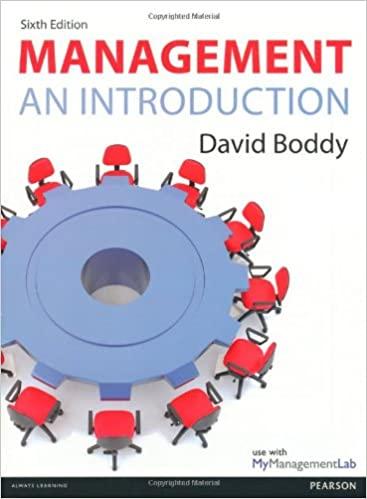1. Why do you think that the Chinese historically pegged the value of the yuan to the U.S. dollar?
2. Why did the Chinese move to a managed-float system in 2005?
3. What are the benefits that China might gain by allowing the yuan to float freely against other major currencies such as the U.S. dollar and the euro? What are the risks? What do you think they should do?
4. Is there any evidence that the Chinese kept the level of its currency artificially low in the past to boost exports? Is China keeping it artificially low today?
5. What policy stance should the United States and the EU adopt toward China with regard to how it manages the value of its currency?
CLOSING CASE China's Exchange Rate Regime For years, there have been claims from politicians in the United States that the Chinese actively manipulate their currency, the yuan, keeping its value low against the dollar and other major currencies in order to boost Chinese exports. In November 2015, for example, presidential hopeful Donald Trump claimed that "the wanton manipulation of China's currency" is "robbing Americans of billions of dollars in capital and millions of jobs."10 But is this claim true? Would it even be possible for China to manipulate the foreign exchange markets to artificially depress the value of their currency? To answer these questions, one needs to look at the history of exchange rate determination for China and understand something about how the international monetary system actually works. For most of its history, the Chinese yuan was pegged to the U.S. dollar at a fixed exchange rate. When China started to open up its economy to foreign trade and investment in the 1980s, the yuan was devalued by the Chinese government in order to improve the competitiveness of Chinese exports. Thus, the official yuan/USD pegged exchange rate was increased from 1.50 yuan per U.S. dollar in 1980 to 8.62 yuan per U.S. dollar in 1994. With China's exports growing and the country running a growing current account trade surplus, pressure began to increase for China to let its currency appreciate. In response, between 1997 and 2005, the exchange rate was fixed at 8.27 yuan per U.S. dollar, which represented a small appreciation. One could argue that during this period, China's currency was indeed undervalued and that this was the result of government policy. By the 2000s, China's growing importance in the global economy and the rise of its export-led economy led to calls for the country to reevaluate its fixed exchange rate policy. In response, in July 2005, the country adopted a managed floating exchange rate system. Under this system, the exchange rate for the yuan was set with reference to a basket of foreign currencies that included the U.S. dollar, the euro, the Japanese yen, and the British pound. The daily exchange rate was allowed to float within a narrow band of 0.3 percent around the central parity. The daily band was extended to 0.5 percent in 2007, 1 percent in 2012, and 2 percent in 2014. Over time, this managed-float system allowed for the appreciation of the Chinese yuan. For example, against the U.S. dollar, the exchange rate changed from 8.27 yuan per dollar in mid-2005 to 6.0875 yuan per U.S. dollar on July 20, 2015, representing an appreciation of 26 percent. More generally, the effective exchange rate index of the yuan against a basket of more than 60 other currencies increased from $6.3 in July 2005 to 123.8 by early 2016, representing as appreciation of 43 percent. The yuan has appreciated by less than this against the U.S. dollar primarily because the U.S. dollar has also been relatively strong and appreciated against many other currencies over the same time period. These data suggest that rather than artificially trying to keep its currency undervalued, since July 2005, the Chinese have allowed the yuan to increase in value against other currencies, albeit within the constraints imposed by the managed float. In late 2015, this commitment was put to the test when a slowdown in the rate of growth of the Chinese economy led to an outflow of capital from China, which put downward pressure on the yuan. The Chinese responded by trying to maintain the value of the yuan, using its foreign exchange reserves, which are primarily held in U.S. dollars, to buy yuan on the open market and shore up its value. Reports suggest that China spent $500 billion in 2015 to shore up the value of the yuan and more than $1 trillion in 2016. These actions reduced China's foreign exchange reserves to $3.011 trillion by January 2017, the lowest level since 2012. China appears to be trying to keep the yuan from depreciating below 7 yuan to the U.S. dollar. One reason for China to protect the value of the yuan against the dollar: A large number of Chinese companies have dollar-denominated debt. If the yuan falls against the dollar, the price of serving that debt goes up when translated Page 339 into yuan. This could stress the financials of those companies (possibly pushing some into bankruptcy) and make it more difficult for China to hit the government's economic growth targets. Another reason: China might want to head off charges from the Trump administration that it continues to keep the value of its currency artificially low. Sources: T. Hult. "The U.S. Shouldn't Fret over Cheaper Yuan," Time, August 14, 2015; "The Yuan and the Markets," The Economist, January 16, 2016; Madison Gesionto, "The Negative Effects of China's Currency Manipulation Explained." Washington Yhues, November 13, 2015; Matthew Slaughter, "The Myths of China's Currency Manipulation," The Wall Street Journal, January 8, 2016; "The Curious Case of China's Currency." The Economist, August 1 1, 2015; L.. Wei, "China Foreign Exchange Reserves Keep Dropping." The Wall Street Journal, January 8. 2017







